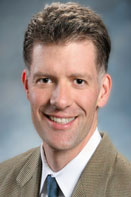
Newsmaker Profile: GrantColfax, M.D.
By Rod McCullom
Dr. Grant Colfax inherited a massive job description. In March 2012 President Barack Obama appointed the former director of the San Francisco Department of Public Health’s HIV programs as the director of the Office of National AIDS Policy (ONAP), making him the focal point for the administration’s goal of “zero new HIV infections.”
It’s not an unrealistic goal, Dr. Colfax believes. “It’s important to acknowledge that 30 years into the epidemic, we have a National HIV/AIDS Strategy [NHAS],” he says. “It really reflects the administration’s commitment to moving forward and addressing the HIV epidemic.”
Targeting Communities That Suffer Most
The NHAS is in place, significant advancement has occur-red in biomedical prevention and an expansion in treatment has stabilized the number of new infections.
But Black America remains at the epicenter of the domestic HIV epidemic. Blacks represent only 13 percent of the nation’s population but account for 44 percent of all new HIV infections, according to the Centers for Disease Control and Prevention (CDC). Approximately 1.2 million people live with HIV/AIDS in the U.S.—including approximately 545,000 who are Black.
Those disparities underscore the need for the administration’s “evidence-based” strategy, says Dr. Colfax. “To address the epidemic, resources must be targeted at the communities that suffer the most. The African-American community has tremendous disparities, particularly among gay men and among women. So we have to address the epidemic in a way that is comprehensive and sustainable.”
The Black AIDS Institute analyzed the NHAS’ potential impact on Black America in the fall of 2010—read parts 1, 2, 3 and 4 of our report. Dr. Colfax says there has been “significant progress” on the strategy despite increased concerns about funding.
“Going forward, we need to consider, what have been the successes of the strategy on the local level that we need to scale up?” said Dr. Colfax. “How are resources being used most effectively for communities most at risk? And how do we use those examples of success to reach the people we need to reach?”
Taking a Holistic Approach
Dr. Colfax’s appointment has drawn praise from colleagues in San Francisco. “Grant moved our programs into alignment with the NHAS to ensure that populations with the greatest need receive commensurate resources,” said Ernest Hopkins director of legislative affairs at the San Francisco AIDS Foundation and chairman of the National Black Gay Men’s Advocacy Coalition. “It caused quite a bit of community controversy among groups who stood to lose money.”
“That commitment to move funding to the communities with the greatest problems bodes well for Black gay men and Black women”—who are at the center of Black America’s epidemic, he added.
There has been a soaring number of seroconversions among Black MSM, including an “alarming” rise among those ages 13 to 19, according to the CDC. New infections increased by 48 percent between 2006 and 2009. Dr. Colfax has suggested that new infections must be addressed in a “holistic” con-text—a concept echoed by many Black MSM advocates.
“Going further upstream, we need to address structural in-equities that contribute to HIV—such as improving job opportunities for young Black men and reducing violence to-ward women of color who are living with HIV,” said Dr. Col-fax. “Addressing those will help us meet the strategy’s goals.”
Leveling the Field for Black Women
In 2009, Black women accounted for 57 percent of new HIV infections among women, and their incidence rate was nearly 15 times that of White women. Black women represent more than one-third of new AIDS diagnoses among Blacks, and a laundry list of health disparities exists for them once they become HIV positive.
A number of Black women have repeatedly called attention to funding inequities that could exacerbate these outcomes. The problem is most acute in the South, which is where “roughly half” of the nation’s AIDS-related deaths occur and which also has the highest number of new infections among Black women, reports Human Rights Watch.
“ONAP announced its appropriation of $14.5 million for Southern states in March 2012,” noted Bambi W. Gaddist, Dr.P.H., founder and executive director of the South Carolina HIV/AIDS Council, which serves a largely African American and low-income client base. “This much needed appropriation has the potential to transform Southern communities plagued with the highest new rates of HIV infection.”
Dr. Gaddist observed: “Black women must be assured that the spirit of this appropriation is met at the state level. ONAP can play a vital role by encouraging HHS to conduct a formal assessment to confirm the number of Southern states that actually intend to pursue the opportunity.”
Rod McCullom has writ-ten and produced for ABC News and NBC, and his re-porting and analysis have appeared in Ebony, The Advocate, ColorLines, The Body and other media. McCollum blogs on politics, pop culture and Black gay news at rod20.com.

